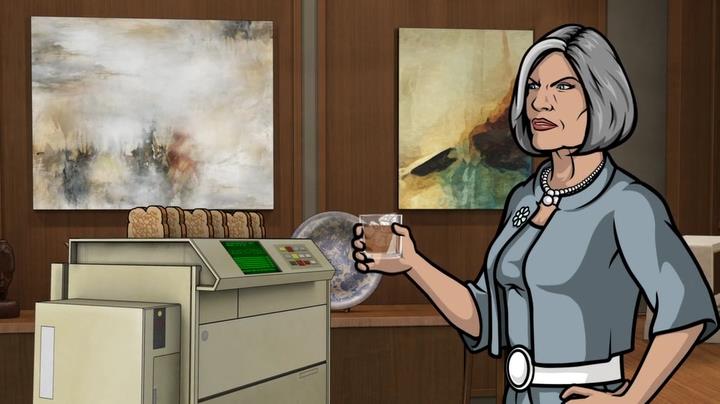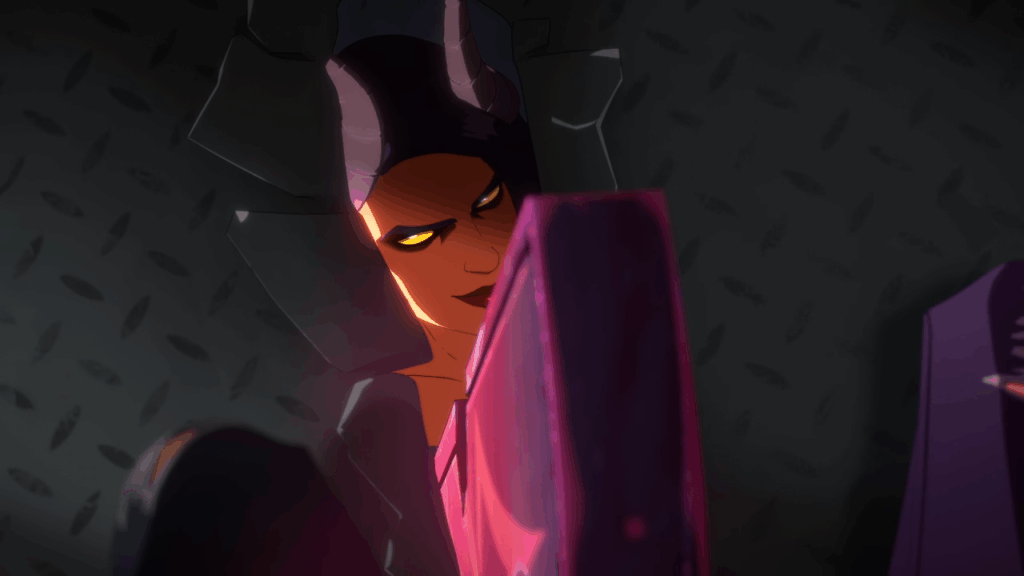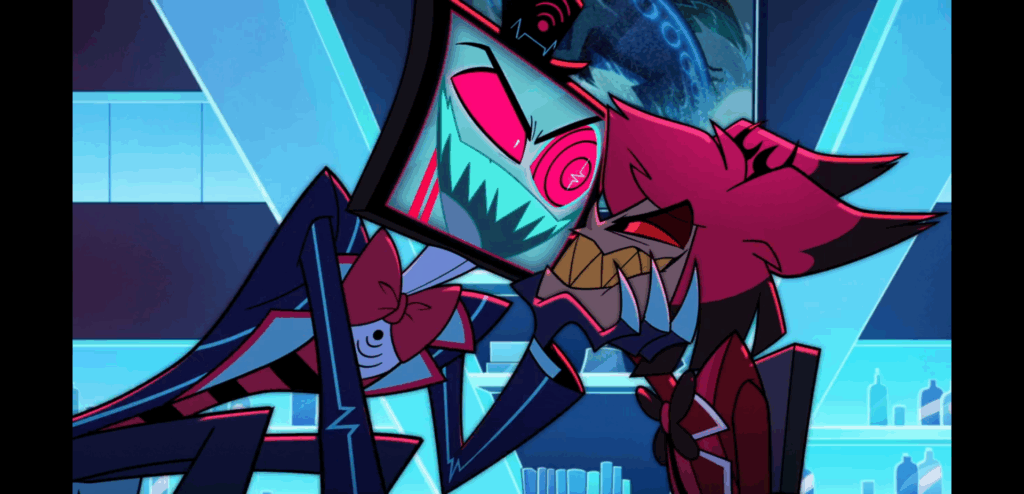As is customary in the world of social media, I came across a post by Cartoon Network from nearly a month and change ago, promoting a show that started earlier this month. I don’t know why it would wait almost forty days to show me such a thing, but that’s as many as four ten’s, and that’s terrible.
If you’ve read my body of work over the last decade, you’ll know that I am old as fuck, but also, before I became a weeb in my high school years, I was a cartoonaboo. The eponymous Saturday Morning Cartoons that used to be a household staple prior to Cartoon Network was where I parked my ass with a bowl of cereal most Saturday mornings to watch things like X-Men, Eek the Cat, The Real Ghostbusters, Bobby’s World, Life with Louie, The Tick, and SWAT Kats: The Radical Squadron. Where ABC had command over the early 1990s, FOX had a solid lineup of shows in the mid-to-late 1990s. Disney, of course, had solid command of the afternoon block, with all the shows people know like TaleSpin, Darkwing Duck, Chip and Dale’s Rescue Rangers, Goof Troop, and more. Omega nerds like me also remember USA Network and their syndication of a lot of video game related series, like The Super Mario Brothers Super Show, Captain N: The Gamemaster, and Sonic the Hedgehog. But because the government got continually harassed by PTA moms and church ladies about “putting kids in front of televisions” with a lack of educational content, they kept increasing the level with which networks had to include educational programming in their cartoon blocks. Coupled with the rise of Nickelodeon and Cartoon Network becoming cable-access dedicated channels for cartoons, most networks ended their animation blocks by 2000.

Now, if you’re as old as I am, or bothered to watch all of Netflix’s The Toys That Made Us series, you know that much of the cartoon landscape in the 1980’s and 1990’s was marred by action figures. Every show had to have action figures and playsets to sell. Capitalism being what it is, children were aggressively marketed to then. I was no exception, I owned a shit ton of TMNT toys, Ghostbusters, X-Men, Biker Mice from Mars, Star Trek, and more. He-Man and the Masters of the Universe, which premiered days before my birth in 1983, was developed by Filmation, a studio known for a number of Superman and Batman series in the 1960s, Fat Albert and the Cosby Kids, and Star Trek: The Animated Series. They developed a very distinct style of 24fps, often jerky animation, but pioneered “first-run syndication” among animated series, paving the way for more white male faces to appear on televisions and toys in that era. They were also among the last domestic animation studios to make cartoons for American markets, as Hanna-Barbara had started outsourcing animation to production companies in Taiwan, the Philippines, Korea, and Japan. Wang Film Productions, a Taiwanese company founded in 1978, served as an outsourced studio for Hanna-Barbara, Disney, and Warner Brothers. They still do work today, though mostly for Dreamworks and CGI for a few Japanese anime studios, however they’re no longer half-owned by Hanna-Barbara, turning over to Brilliant Pictures Group in 2013. The irony of this is not lost on me considering one of my son’s favorite shows to watch right now is The Mickey Mouse Clubhouse, which was something my niece also loved seven or eight years ago, and I lamented how I didn’t like it because it felt extremely janky. Truth is, almost everything we old fucks enjoyed as children were made overseas by companies who also made anime and other animation. That’s why it was so easy for many of us to slide into anime around the 2000s when that market exploded exponentially in America. We were already halfway into it. When people ask me how I got into anime, I half-joke and say “Well Silverhawks was anime, right?” I was maybe five or six, and I had pajamas that had the wings sewed into the arms and legs. I thought it was pretty fucking cool, but the weird thing is, I have no other specific memories of that show. So I don’t for the life of me know how I got that unless it was just kind of part-in-parcel with all of the other similar shows of the time. But again, this was a case of Rankin-Bass Animated Entertainment, known mostly for classic holiday animations, outsourcing this show to Pacific Animation Corporation who did work for Disney, and Hanho Heung-Up, famous for Teenage Mutant Ninja Turtles, Chip and Dale’s Rescue Rangers, and SWAT Kats. Today they work on Bob’s Burgers and Castlevania, and have also been responsible for the Brickleberry universe of itself and its terrible clones.
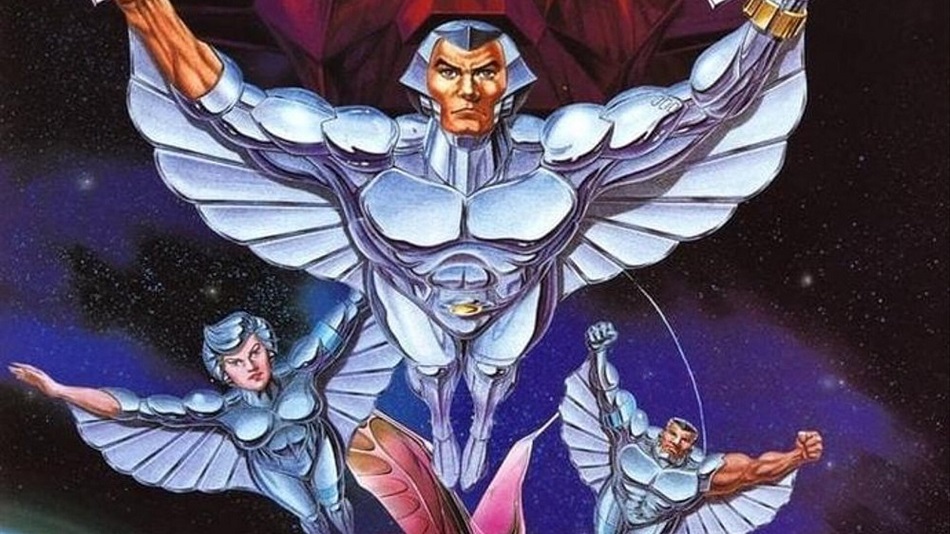
Formulaic animation was a staple to 1980’s and 1990’s animated shows because it needed to do well enough to sell toys. That was the objective. Certainly there were a number of outliers pushing more for the artform itself, or to entertain, but the common stereotype among that era was “cartoons are for children” in the same vein video games were for children because Nintendo, in an effort not to repeat The Video Game Crash of 1983, marketed their system and games in the children’s toys section of department stores. Most of Nickolodeon’s 1990s cartoon lineup, such as Doug, Rugrats, Ren and Stimpy, Rocko’s Modern Life, Hey Arnold, and more, had some toy tie-ins, but not often to the same degree that toys for boys had a decade prior. My father, a man who often embraced those very conservative social takes on popular culture, was a big fan of Ren and Stimpy and Rocko’s Modern Life. They’re shows that were good then, and withstood the test of time to still be largely watchable now. I can’t say the same about many of those older shows. Being older, you understand the lack of depth when it’s just made to sell toys, and it kind of ruins the doe-eyed view you had of it as a kid. I tried to watch the original Ducktales after the reboot, and while it’s not bad, the reboot adds that modern flair that you’ve grown accustom to, and going back thirty years feels like an out-of-body experience. I may also just not be able to experience nostalgia like most neurotypical people though.
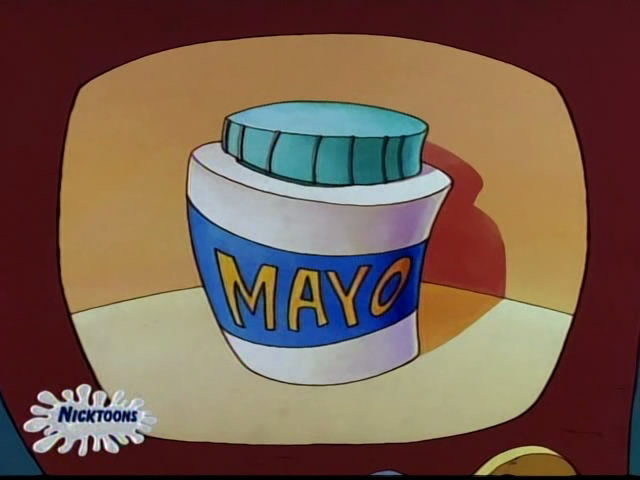
The “Golden Age of Cartoon Network” would be the result of Fred Seibert, who was the last president of Hanna-Barbara prior to its sale in 1996 to Time Warner. Cartoon Network had launched in 1992 when he became Hanna-Barbara’s president, and much of its early programming was Hanna-Barbara’s back catalogue. With a desire to re-invent cartoons and inject fresh talent into the network, he launched the What a Cartoon! project, beginning with features attached to episodes of Space Ghost Coast-to-Coast in 1995. Artists like Craig McCracken, Pat Ventura, Van Partible, Eugene Mattos, Genndy Tartakovsky, Dian Parkinson, and more, created forty-eight shorts for this project, and from it spawned regular series runs of shows like The Powerpuff Girls, Dexter’s Laboratory, Cow and Chicken, Courage the Cowardly Dog, and The Grim Adventures of Billy & Mandy. What many people don’t realize is that after Seibert left Hanna-Barbara, he founded his own studio, Frederator Studios, which continued to incubate content for CN and Nick in the forms of Adventure Time, My Life as a Teenage Robot, Bee and PuppyCat, and Castlevania. Many of the names and shows above were done by people who went to, you guessed it, California Institute of the Arts, or CalArts. Furthermore, many producers, artists, and other creatives that understudied in these shows would go on to helm their own shows, such as Owen Dennis’ Infinity Train, who worked as a storyboard artist on The Regular Show. Rebecca Sugar’s Steven Universe came after her time spent as a storyboard artist in Adventure Time. Peter Browngardt’s Uncle Grandpa also came from Adventure Time. Pendleton Ward himself came from The Marvelous Misadventures of Flapjack. A great deal of talent was cultivated by Fred Seibert’s late-1990s project to revitalize animation at a time when Disney fell to straight-to-VHS flops as Pixar worked to save that company.
So how do we get from that, to the CalArts meme?

Back in 2010, Ren and Stimpy creator John Kricfalusi had a blogspot he used to talk about various animation-related topics. One such discussion was about how he thought that modern animated shows borrowed a lot of recycled facial expressions from both Disney and Don Bluth works during the 1970s, 80s, and 90s. His working theory was that because Disney liked to recycle a lot of its animation back then (and they did), each new generation of art and animation graduates just copied the previous one, until you ended up with what he called “this recycled look that is not influenced by life or even other cartoon styles”. Of course, this is the same John Kricfalusi who was fired by Nick during Ren and Stimpy‘s run due to deadline issues, and largely had to exit the animation scene due to (credible) allegations of grooming and sexual abuse. One of his accusers was Katie Rice, who after being featured in Penny-Arcade Stripsearch went on to create webcomics, and then direct the reboot of Animaniacs. Nevertheless, the meme took off from there as people latched on to the “CalArts Style” aspect of it without really considering what John K was getting at, and that was that apart from a couple dozen standouts over time, a large amount of American animation is same-style, recycled faces, because a lot of it was green-lit to make money, and make toys.
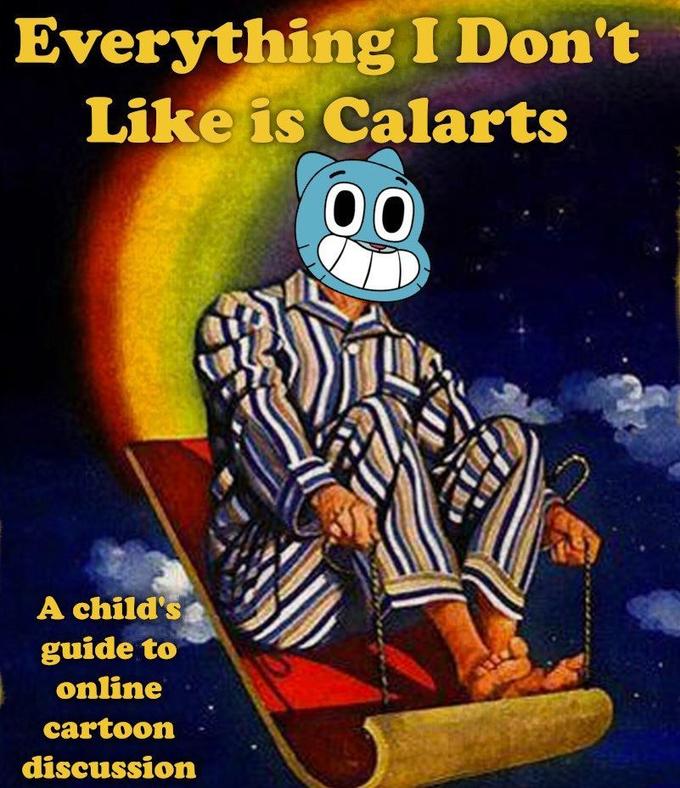
Now, for the record, you can probably find some old rants or tweets of mine somewhat agreeing with the trolls on some aspects of the CalArts meme. However, I do approach this from a similar perspective as John K did. When you look at Disney’s portfolio of similar works, like the meme about how Baloo jumps through each timeline trying to get home in reference to his same appearance in several movies and films, you have to consider that they were not there to iterate on the art form. They were there to make money. Disney has always been a company that makes its money on formulas, trends, and focus groups. There are a number of memes out there noting the same-face of most Pixar and Walt Disney Animation Studio releases over the last fifteen years. But they don’t care, because it’s part of a larger formula they employ with all of their brands, including Pixar, Marvel, and Star Wars. Their original IPs make a modest profit, but that’s not enough for them. Meanwhile, you have a bunch of younger animators working for Williams Street, Titmouse, and several other studios making content for the streaming companies that base a lot of their style around more simple, easy-to-animate, easy-to-execute animation. That again is about cost, first and foremost. It costs a lot just to make computer-aided animation now. A lot of this was driven by the transition from cel-shaded and hand-drawn animation to CGI and computer-generated animation. Early Titmouse stuff was the sort of animated shorts you saw on MTV, and some post-production work for other series. Adult Swim picked them up for shows like Metalocalypse, Superjail, and Black Dynamite. Some of that stuff was extremely janky, and I certainly felt at the time that the direction of “adult animation” was being skewered by Adult Swim’s “stoner/slacker comedy” mindset, something they imported from the Gen X MTV crowd in the late 1980’s to try and redress for twentysomething millennials. The result was a lot of this mentality blended into CN’s typical programming, which also targeted that same demographic with more mature themes although they were easily repackaged for younger audiences. Adult Swim knew this, which is why it often deliberately scheduled shows like Adventure Time to abut up against the start of its programming block to make it seem like a longer block of programming. People began to not tell the difference between Cartoon Network and Adult Swim programming, which is largely why I felt the two should have separated a decade ago. It’s less apparent now because more people use Hulu to watch Adult Swim programming, bypassing Cartoon Network entirely. Warner Brothers acquisition of the former Turner Broadcasting System and related assets put WB in charge of Cartoon Network, and they opted to close their longtime studio to move them under Warner’s lot. At some point I expect either Adult Swim and Williams Street will diverge from them, or Cartoon Network will just further dissolve into WB where they just sell that content to streaming networks, or form their own.
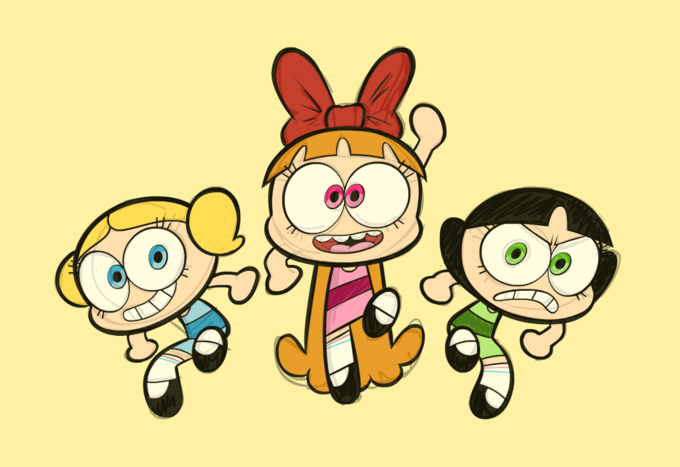
Simply put, the CalArts meme is more often used by alt-right chucklefucks to bandwagon on shows they don’t like because they’re made by people with progressive values, women, non-whites, or LGBT∞ folks. It has long lost any kind of constructive critque John K imbued on it originally. I’m not particularly saying he was even right, because I tend to be of the opinion that a lot of the arts and other creative inputs are largely derivative. People make things inspired by other people. Steven Universe borrows themes from all sorts of previous animated series and anime-inspired genres. Though I’ll say the real kicker about that show is that the production animation ends up being worse than the pilot animation. That’s fairly consistent for almost every show though. Infinity Train, Hazbin Hotel, even going back to the pilots of The Powerpuff Girls (and Craig’s even older prototype, the Whoopass Girls) all had these amazing, rough, sometimes hand-drawn pilots that once green-lit into production, got completely sanitized in their output as more storyboard artists and hands got into the mix. Steven Universe was especially noted for having such varied animation quality because they weren’t being consistent with who was doing the work.
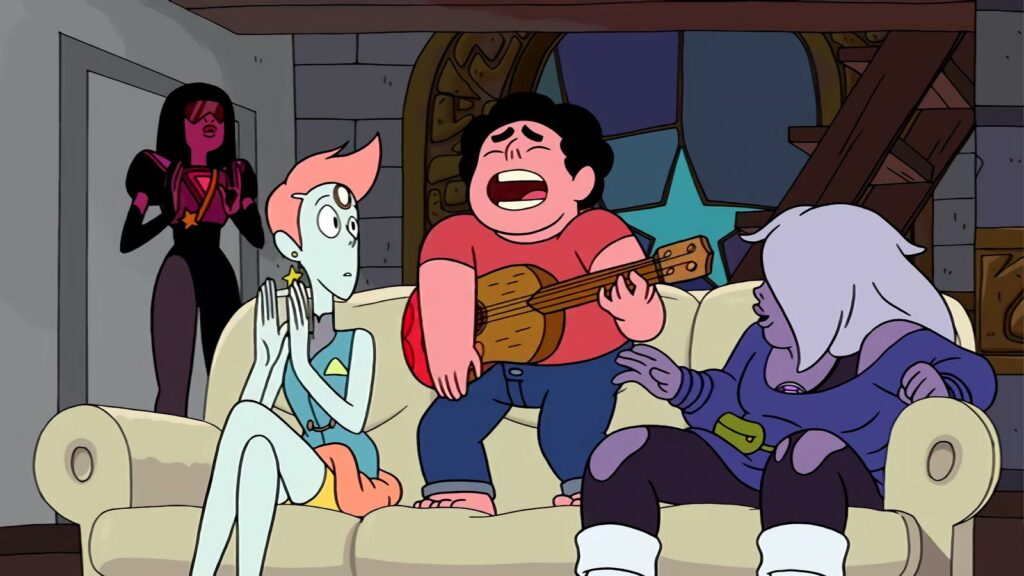
Western animation has enjoyed an incredible resurgence over the last 5-7 years thanks to streaming platforms investing money into US and Canadian animation studios. However, as evidenced by the Warner Brothers Discovery merger killing Infinity Train and Final Space, as well as Paramount booting Star Trek: Prodigy out for it to be picked up by Netflix, we’re at another crossroads where animation isn’t stalling because of same-faces, it’s stalling because of formulaic greed. If it’s not making fistwads of cash, nobody wants it. There aren’t enough Fred Seiberts out there with incubation projects snagging fresh talent out of animation schools and giving them a platform to debut their work. Studios keep going back and trying to squeeze more juice out of 2010’s greatest hits. Don’t get me wrong, Fionna and Cake was amazing, but it just shows that even animation is succumbing to the fate of reboots and rehashing of old IP that just doesn’t stand up now. The Animaniacs reboot was incredibly piss-poor, and I don’t have a lot of faith in Tiny Toons Looniversity coming up MANGO JUICE either. I have no expectations for the amazing cartoons of my time to continue in any form or fashion today. I’d rather just see it die at that point. I will go back and just rewatch Chip and Dale’s Rescue Rangers over and over if a reboot isn’t even going to attempt to capture the original’s spirit and ethos. What’s worse is that Disney is capable of rebooting their shows successfully. The reboot of Ducktales was great, and I’m sure purists will frown and cry, and go “Webby wasn’t a Mary Sue McQuack, how dare Huey, Dewey, and Louie have different faces and personalities, Mrs. Beakley wasn’t a secret agent she was a HOUSE MAID.” The show was rightfully fun, had a really good plot, and ran something new and fresh over the original.
And here is the rub, we as children may have had our eyeballs assaulted by television a lot back then, but our children are sitting there flipping through the hottest, dumbest garbage on Youtube and TikTok that our Disney Afternoons were far better to watch by comparison. Disney, and even smaller animation studios with tighter budgets, have an incredible opportunity to leverage these platforms for new and interesting content that could incubate larger projects on television and film. They don’t, and I can only imagine the reason is the top execs continue to hoard profits and capital rather than reinvest in their companies, but in the animation medium itself. The titans of animation, the kind of people who elevated the art form are long gone, and the people coming up now either are just there for a paycheck, or cannot break through the mold of suits to pitch better ideas. Unlike video games, which enjoys a robust independent platform and scene, there is little out there for the indie animation studio unless you crowdsource funds. That’s kinda sad.
I can tell you, if I were a billionaire, I would be funding a platform for startup animation studios to get their work out there. A platform that can put out completed episodes, but still be able to sell pilots and series-to-order to streaming platforms and recycle those profits back into more startups. A goddamn animation social enterprise.
Because I fucking like cartoons.


